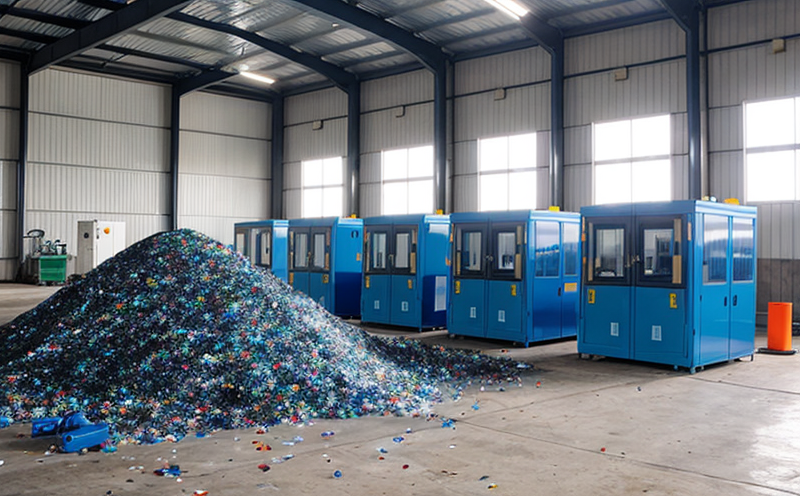ASTM D6288 Recycled Plastics Sampling Procedures
The ASTM D6288 standard provides comprehensive guidance on the sampling procedures for recycled plastics, ensuring that samples are representative and suitable for subsequent testing. This service is critical in waste management and recycling industries to maintain quality control and compliance with international standards.
The primary goal of this sampling procedure is to ensure that the plastic materials used in manufacturing or processing meet stringent requirements regarding their chemical composition, physical properties, and overall performance. Proper sampling helps identify any inconsistencies or variations within the recycled material batch, ensuring uniformity and reliability across all products derived from these materials.
ASTM D6288 covers various types of recycled plastics including polyethylene (PE), polypropylene (PP), polystyrene (PS), and other engineering thermoplastics. By adhering to the recommendations outlined in this standard, laboratories can perform accurate analyses that contribute positively towards environmental sustainability goals.
The ASTM D6288 sampling process involves several key steps which are designed to minimize errors during collection and preparation of samples. These steps include:
- Identifying appropriate locations within the waste stream where samples should be taken
- Selecting suitable equipment for collecting representative samples
- Determining appropriate sample size based on batch size and variability expected
- Handling collected materials carefully to avoid contamination or degradation
- Storing samples under controlled conditions until analysis can be performed
It is important to note that improper sampling may lead to inaccurate test results, which could result in substandard products being released into the market. Therefore, strict adherence to ASTM D6288 ensures both accuracy and consistency throughout the recycling process.
In summary, the ASTM D6288 standard plays a crucial role in ensuring high-quality recycled plastics by providing clear guidelines on how to properly sample these materials before testing begins. This helps maintain consistent product quality while also contributing to more sustainable manufacturing practices.
Quality and Reliability Assurance
The ASTM D6288 standard is just one part of a broader framework aimed at ensuring the reliability and accuracy of recycled plastics testing. Other important aspects include:
- Standard Operating Procedures (SOPs): Laboratories must establish detailed SOPs for all stages of sample preparation, analysis, and reporting.
- Traceability: Samples should be uniquely identified throughout the testing process to track their journey from collection point to final result.
- Data Management: Robust systems are needed to store and analyze large volumes of data generated during testing.
To further enhance quality assurance, regular calibration of instruments is essential. This ensures that measurements remain accurate over time despite potential wear and tear. Additionally, internal audits conducted by trained personnel help identify any deviations from established protocols early on.
By implementing these best practices along with strict adherence to ASTM D6288 sampling procedures, laboratories can significantly improve the overall quality of their recycled plastics testing services. This not only benefits individual clients but also contributes positively towards broader industry standards and environmental sustainability initiatives.
Customer Impact and Satisfaction
The implementation of ASTM D6288 sampling procedures has far-reaching impacts on customers in the waste management and recycling sectors. Here are some key benefits:
- Informed Decision-Making: Accurate sample collection allows clients to make informed decisions about which recycled plastics best suit their needs.
- Compliance Assurance: By following these standards, businesses can ensure they meet regulatory requirements related to waste management and recycling.
- Enhanced Reputation: Providing reliable testing services helps build trust among clients and stakeholders alike.
Besides the direct benefits mentioned above, there are indirect advantages too. For instance, improved product quality can lead to increased customer satisfaction and loyalty. Moreover, demonstrating commitment to environmental responsibility through rigorous testing practices enhances an organization’s reputation in both local and international markets.
Ultimately, implementing ASTM D6288 ensures that recycled plastics meet specified quality criteria, thereby fostering confidence among all parties involved—be they suppliers, manufacturers, or end users.
Use Cases and Application Examples
The application of ASTM D6288 sampling procedures extends far beyond just ensuring proper collection methods; it also supports various use cases across different industries. Some common applications include:
- Quality Control: Continuous monitoring during manufacturing processes to catch any inconsistencies early.
- Research and Development: Investigating new blends of recycled plastics for improved performance characteristics.
- Supply Chain Management: Ensuring consistent material quality across suppliers in a globally distributed supply chain.
A real-world example would be a manufacturing plant producing plastic containers. By adhering to ASTM D6288, they can ensure that every batch of recycled plastic used meets the necessary standards for color consistency and strength. This consistency translates directly into better product quality and reduced waste generation.
Another scenario could involve an academic institution researching novel ways to enhance recycling rates. Here, accurate sampling according to ASTM D6288 would provide reliable data points that contribute towards developing innovative solutions.
In both cases, proper adherence to this standard ensures robust testing practices which ultimately benefit everyone involved—from the manufacturer looking for consistent raw materials to consumers demanding eco-friendly products.





